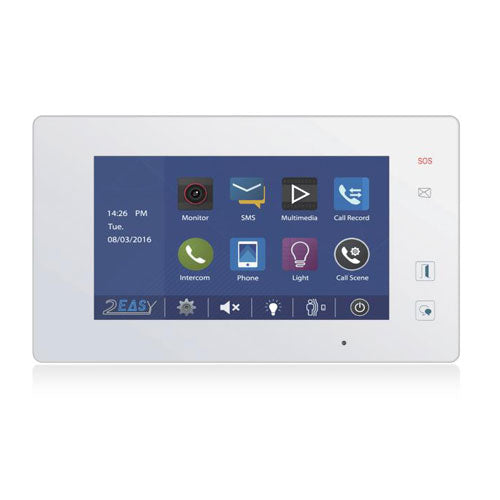2007: Avril Lavigne has the best-selling album and the third Pirates of The Caribbean movie is sailing towards becoming the box office hit of the year. Also, Apple’s iPod is six years old. But while this incredible innovation in miniaturisation had undoubtedly changed the way the world accesses music, it was still viewed by most people as an item of convenience; 1000 songs in your pocket, just don’t think about what the quality of those files were. (They were usually MP3, and pretty poor quality MP3 at that.)
Launch Landscape
As a result of this MP3 bias, the speakers, docks and peripherals that were on the market to support this incredibly popular device tended to be pretty poor quality too; computer peripherals created by companies with an eye for a quick buck and known for manufacturing joysticks and keyboards and not pristine sounding speakers.
However, the maximum storage of the iPod was creeping up. From the original model’s 10GB to the 5th Generations 80GB, and with September 2007’s launch of the 6th Generation ‘Classic’, 160GB. More than enough to accommodate something a little more pleasant on the ear than the standard 128kHz MP3s that were the norm.
But it took insight to see this potential; something possessed in spades by Bowers & Wilkins’ engineers.
A Zeppelin-shaped idea

Like all the best Bowers & Wilkins loudspeakers, the original Zeppelin was conceived in the Steyning Research Establishment (SRE) in West Sussex. This ground-breaking Research & Development centre was set up by our founder John Bowers to progress the pursuit of true sound, and has been the launch pad for like the likes of the 800 Series and Nautilus, and technologies such as the Diamond Dome Tweeters, Matrix and Continuum cones.
Bowers & Wilkins engineers are obsessed with great sound, that much is obvious. Unsurprisingly, they are also passionate when it comes to music and technology, and as a result the iPod had long ago made inroads into SRE where it was used, played with and considered in detail. It was here that the iPod’s potential as a source of good-quality digital sound was seen. Why did the iPod have to be limited to the types of files and the sort of speakers that people used it with at the time; there was enormous potential for better-quality files, and with the move to a USB connection, better quality output which could serve more capable loudspeakers.
The seed was sown, and an idea began to grow.
Development
The Zeppelin almost is the perfect example of how SRE works. An initial idea leads to a series of prototypes – with models made in the in-house work shop – a long process of refinement, the development of bespoke drivers and enclosures and countless hours of listening by the best ears in the business.
However, Zeppelin also involved what were at the time relatively new elements for Bowers & Wilkins in the form of amplification and Digital Signal Processing. Luckily, experience in amplifiers to power subwoofers and a developing interest in DSP and what it was possible of when designed correctly made Zeppelin the ideal project, and it soon began to perform exceptionally well.
Now there was just the way it looked….
Design
At Bowers & Wilkins we are always of the mind that ‘form follows function’, and much of Zeppelin’s shape is based around sound engineering principles such as having as little baffle surrounding the tweeter as possible and removing straight sides in order to improve dispersion.
But, the iconic look of Zeppelin had help from an amazing industrial designer in the form of Morten Warren and his team at Native. His take on Zeppelin was so ahead of its time that even in the fast-moving wireless speaker arena it is still instantly recognisable, and is a thing of beauty that throughout numerous iterations has not veered from its original concept.
Launch

Zeppelin launched in September 2007, and a large number of people held the opinion that we had gone nuts! Why would a company like Bowers & Wilkins launch a product to support a device such as the iPod; surely nobody using one would care enough about audio to buy a loudspeaker designed to deliver fantastic sound and which, let’s be frank here, cost way more than any of the competition! Was there really a market for a premium iPod dock?
The answer was an emphatic yes. The amount of competitive products that were hastily developed and continue to appear is a testament to the success of the original Zeppelin.
Reception
Further testament came in the form of a deluge of glowing reviews and many, many awards. Zeppelin garnered awards from What Hi-Fi?, Stuff magazine, Macworld, Trusted Reviews and many more, including the prestigious EISA award for Best European Sound Station 2008 – 2009.
Zeppelin also sold very well, and introduced new consumers to the world of great audio. People who may never have considered buying a pair of loudspeakers before were drawn in by the performance and design of Zeppelin. This trend has continued, and Zeppelin and the improved versions that followed continue to be praised and purchased throughout the world.
Move with the times
Much of this success is down Bowers & Wilkins’ unwillingness to stand still; each iteration of Zeppelin that followed the original model has added improved features and functions. Perhaps more importantly, each iteration has also delivered dramatically improved audio performance on the models that came before it.

Zeppelin Air is a great example of this. There was very little externally to tell 2012’s Zeppelin Air apart from its predecessor, but internally it was very different. All improved drive units, better amplification and new 24bit-96KHz DACs helped lift the performance dramatically. Zeppelin Air was also cutting edge in the sense that it was the first premium iPod dock to feature Apple’s new AirPlay wireless streaming technology, which meant for the first time you could stream music to Zeppelin and not have to dock you iPod – or increasingly, iPhone.
The latest iteration of Zeppelin is the best yet. Zeppelin Wireless took the model of the original Zeppelin and completely re-invented it. It retained AirPlay but added Bluetooth, losing the now little-used docking arm in the process. But, the real story was the sound quality: Zeppelin Wireless is a dramatically different beast.
It benefits from a host of Bowers & Wilkins technologies more usually found in high-end loudspeakers, including Double Dome tweeters from what was then the new CM Series and FST midrange drivers. It also features a larger, more accurate bass driver, and advanced Digital Signal Processing.
The result is a single box speaker that is the last word in wireless sound and functionality, and a worthy descendant of the original Zeppelin – a loudspeaker that many people felt nobody wanted, but which ended up changing the face of digital sound.


